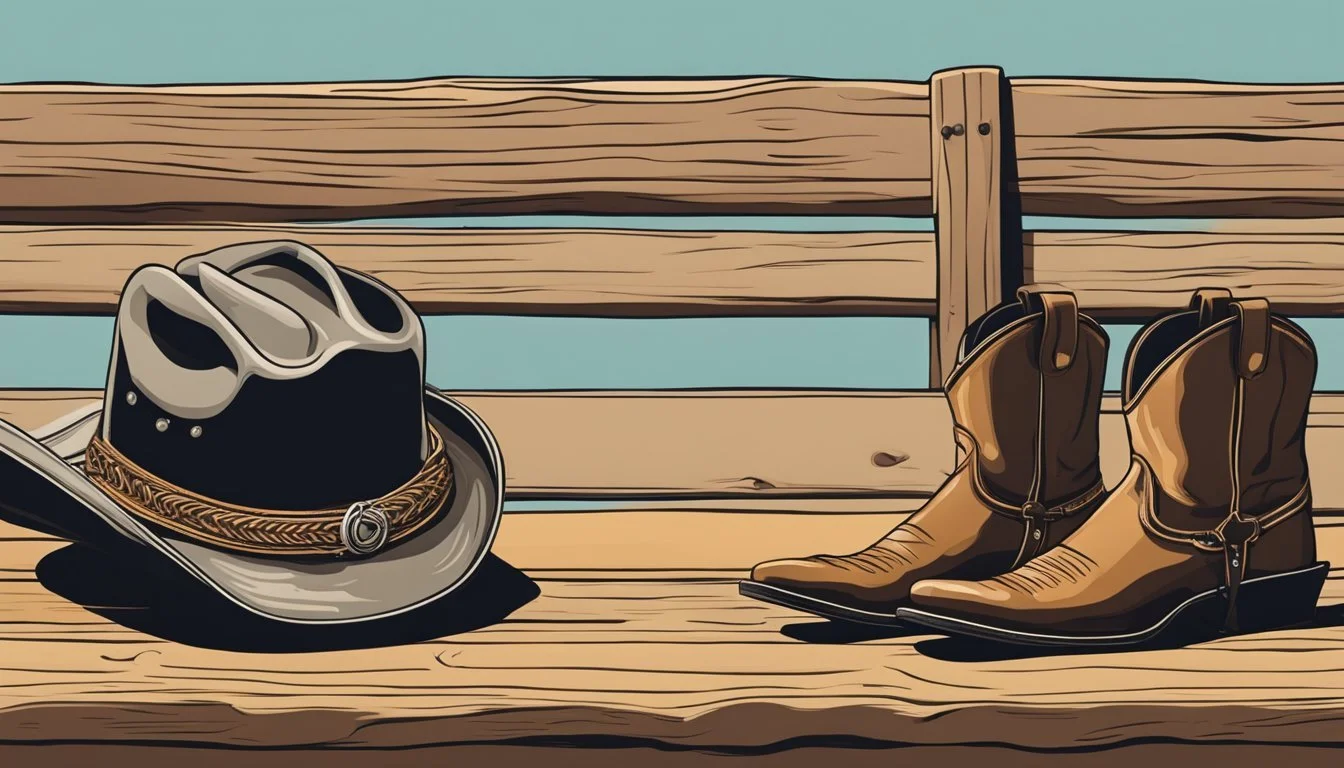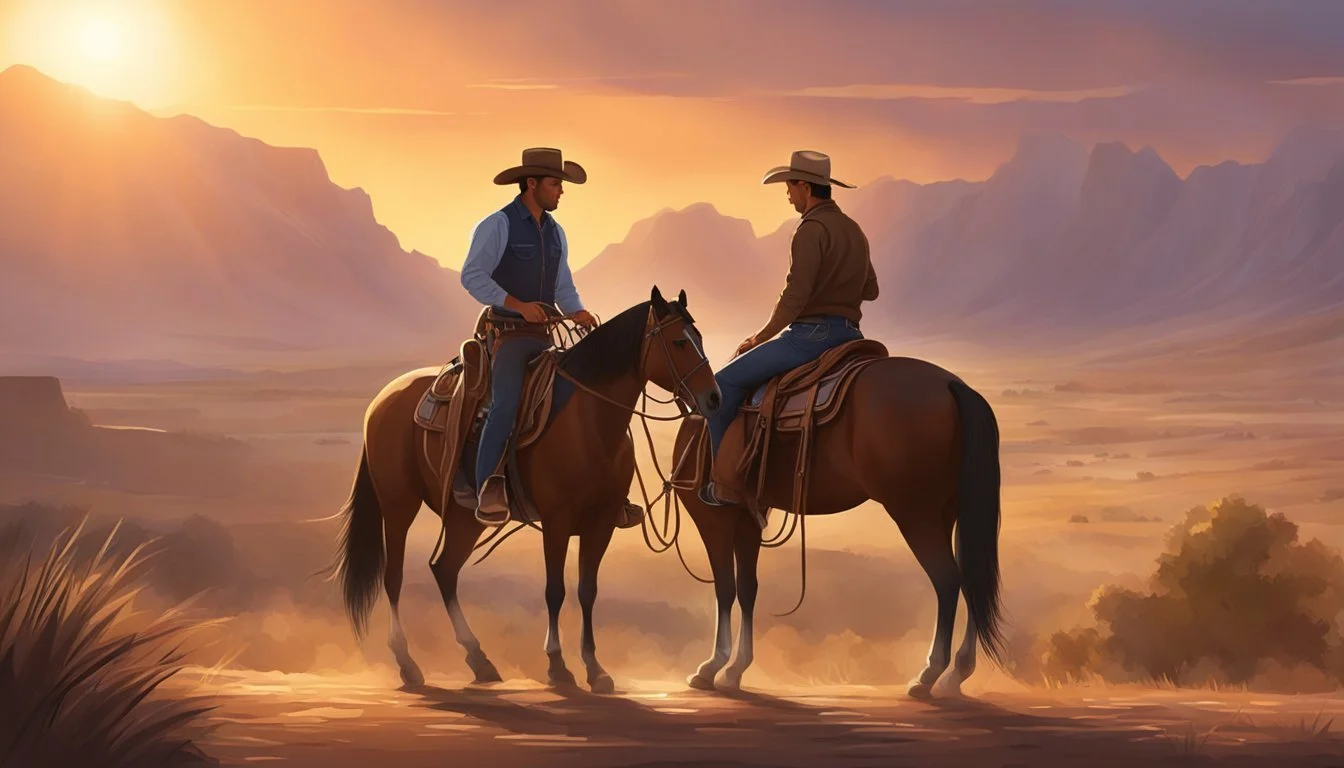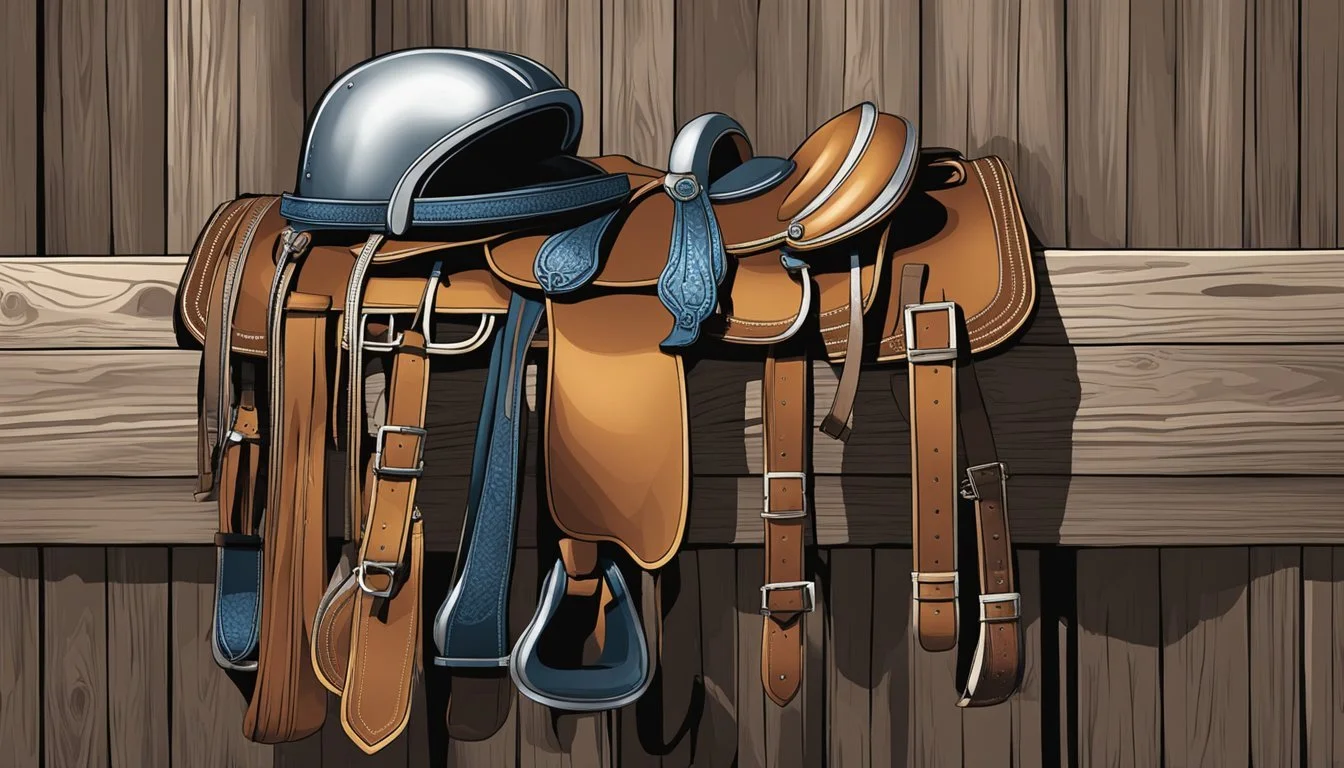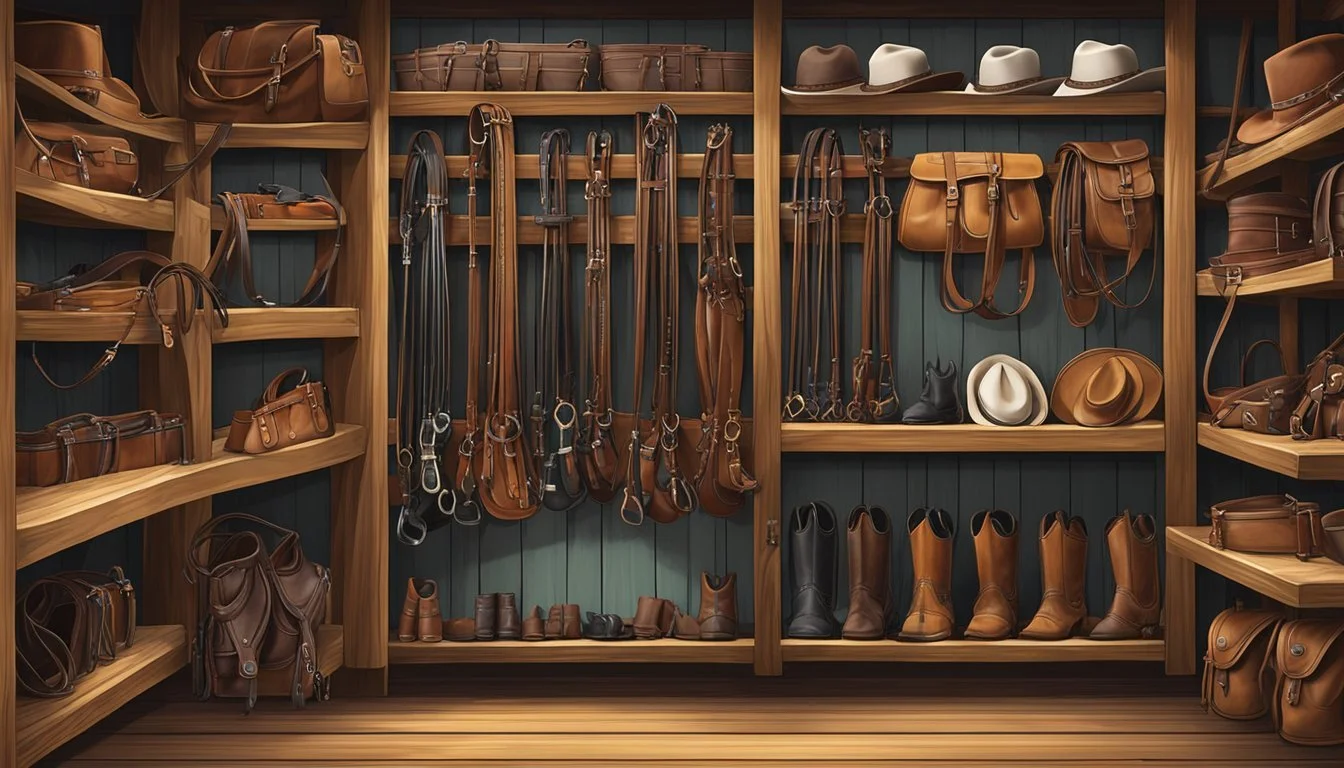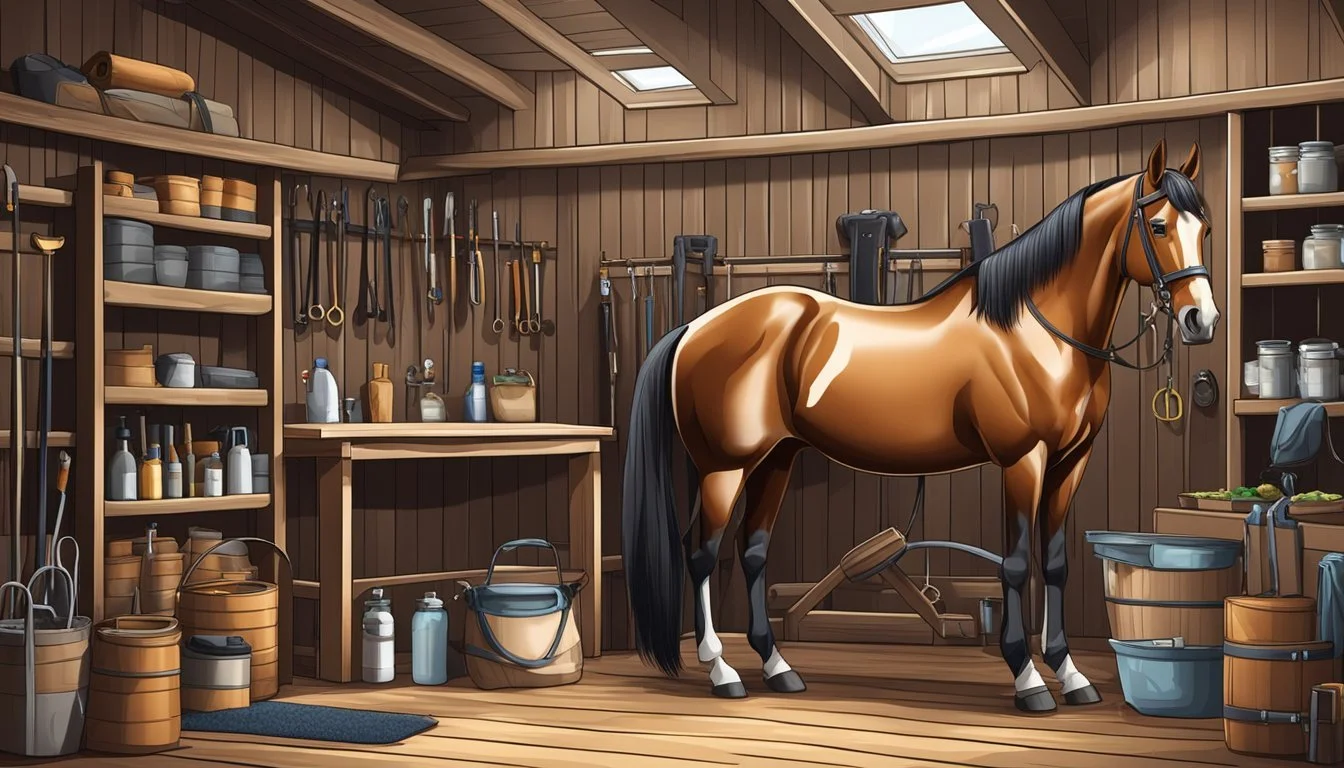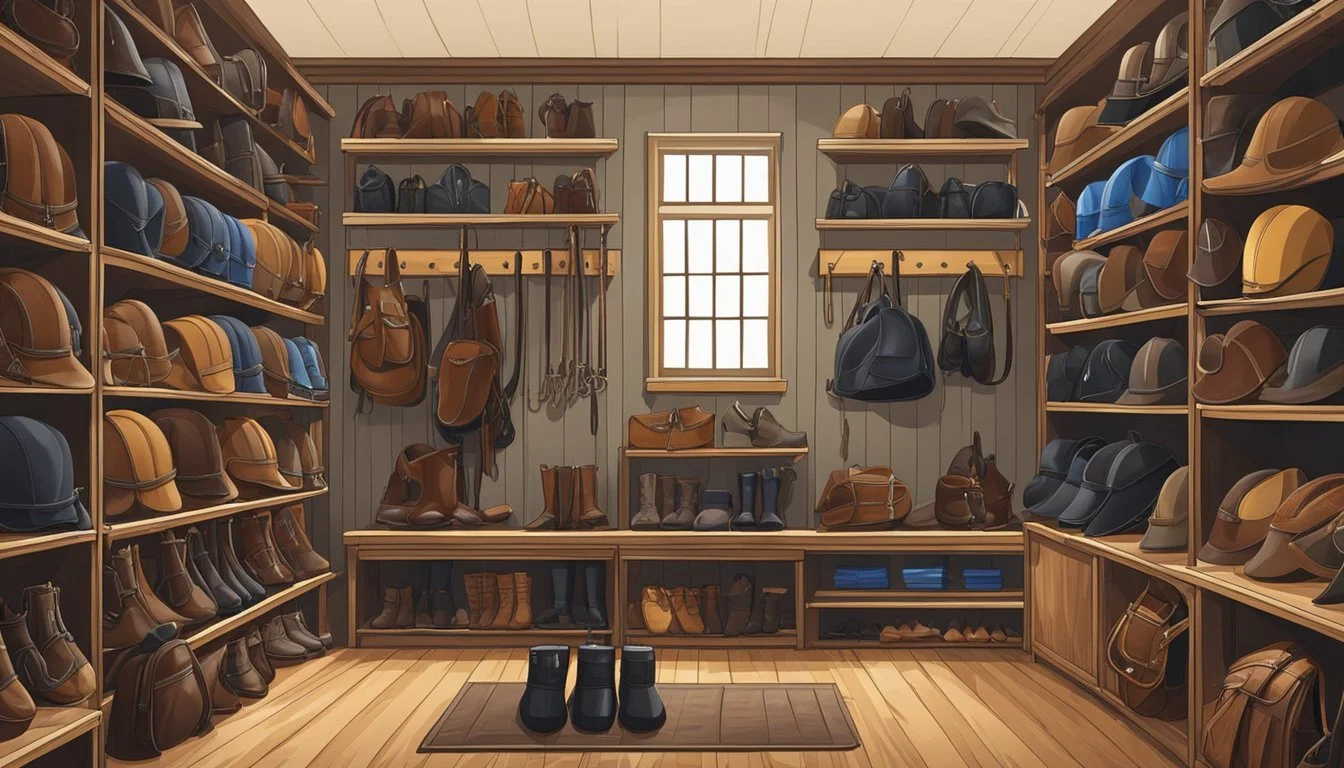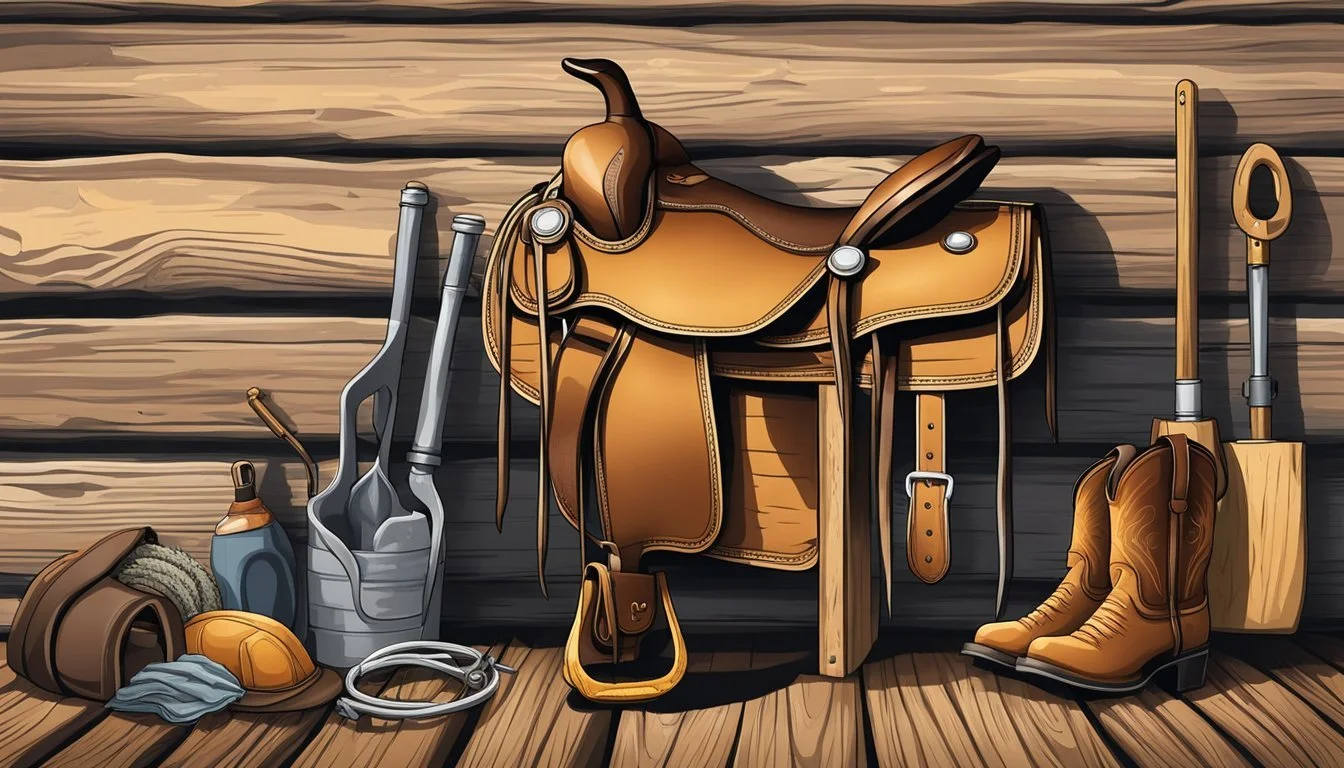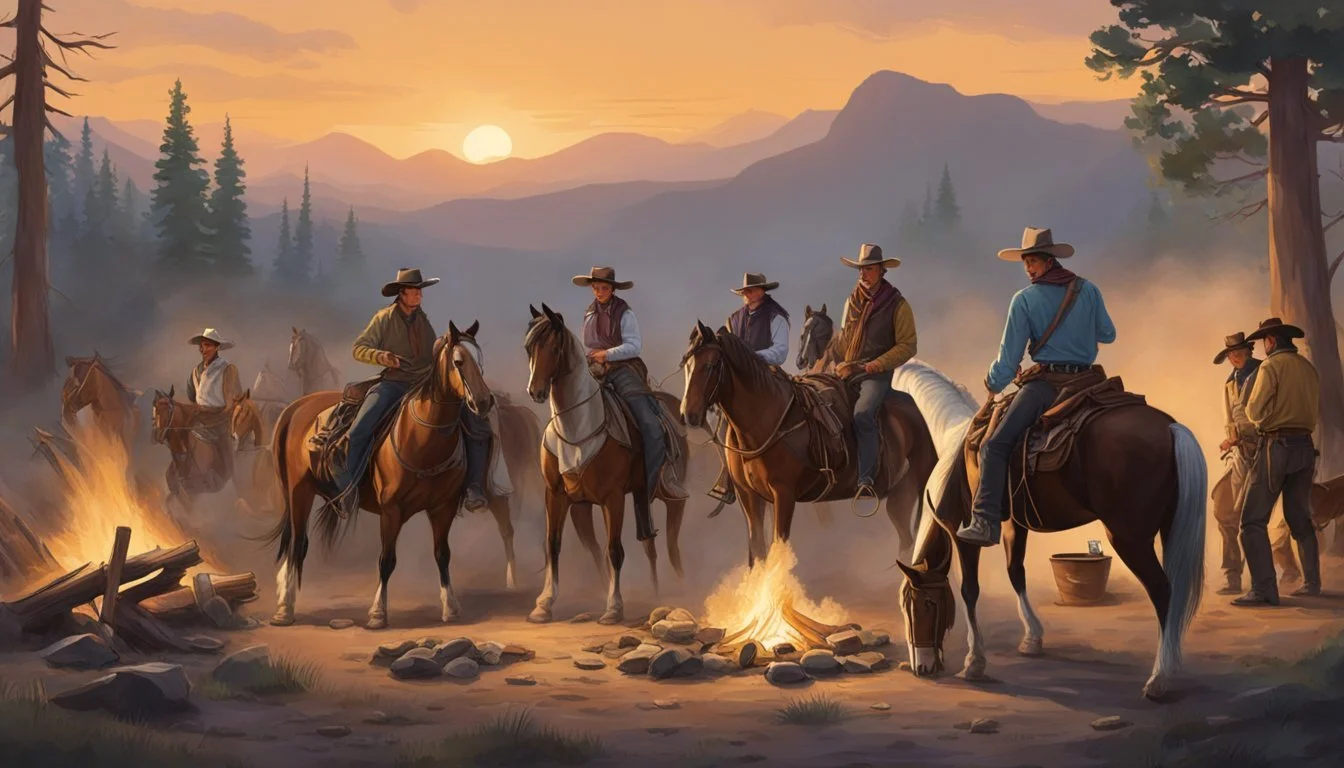The Best Horseback Riding Gear for Aspiring Cowboys
Essential Equipment List
Embarking on the path to becoming a cowboy calls for not just skill and determination but also the right gear, which is as much about function as it is about tradition. Horseback riding, a cornerstone of cowboy culture, demands attire that can withstand the rigors of outdoor life while ensuring comfort and safety. Apparel and equipment have been honed over generations to meet the specific needs of western riding, where the relationship between rider and horse is paramount.
To truly live the cowboy lifestyle, aspirants must gear up appropriately, starting with a proper cowboy hat made to shield the eyes from the sun and a pair of high-quality boots that provide grip and protect the feet. Just as important are the jeans and chaps designed to protect the rider's legs from the brush and elements. A durable, long-sleeved shirt is the norm for guarding against abrasions that come from working with cattle and horses.
To fully embrace what it means to be a cowboy, one can't overlook the essential tools of the trade. A reliable saddle, bridle, and lassos are all part of a cowboy's daily life, each serving a unique and practical purpose. Even the seemingly small details like gloves and spurs play vital roles in the effective and humane guidance of a horse. Capturing the essence of cowboy culture means equipping oneself with gear that's as robust and enduring as the lifestyle itself.
Getting Started with Horseback Riding
Before venturing into the domain of horseback riding, aspiring cowboys need to grasp the essentials of horsemanship and immerse themselves in the rich tapestry of cowboy culture.
Understanding the Basics of Horsemanship
Horsemanship extends beyond merely riding; it encompasses the comprehensive care and understanding of horses. A beginner cowboy must prioritize developing a connection with the horse, often starting with basic caretaking skills like grooming and feeding. This foundation builds trust and confidence—key components of Western riding.
When it comes to riding gear, the essentials include:
Helmet: An absolute necessity for safety.
Boots: Preferably with a heel to prevent slipping through stirrups.
Saddle: Western saddles provide a sturdy base for long hours on the trail.
Bridle and Bit: Critical for controlling the horse, with various types suited to different horses and levels of experience.
Comfort and control are paramount, so investing in quality tack that fits both the rider and horse appropriately is crucial.
Exploring Cowboy Culture and History
Cowboy culture is steeped in the traditions of Western life, where horsemanship was not just for sport but a way of life. Those joining the cowboy community should acquaint themselves with its history and values, which include a deep respect for the land and animals, as well as a strong sense of companionship among riders.
In Western riding, the attire isn't merely for show; it serves practical purposes. Chaps protect the rider's legs, while the wide-brimmed cowboy hat shields against the sun. Through participation in rodeos, round-ups, and community gatherings, aspiring cowboys can connect with seasoned riders who provide guidance and firsthand accounts of cowboy lore and practices.
Embracing this culture fosters a profound appreciation for the history of Western riding and the role of cowboys throughout the generations.
Essential Horseback Riding Gear
The proper selection of gear is essential for any aspiring cowboy, focusing on durability, safety, and the authentic Western style. These essentials not only ensure a comfortable ride but also help maintain the traditional cowboy image.
Choosing the Right Cowboy Boots
Cowboy boots are a staple of Western attire and choosing the right pair is paramount for both style and function. Full-grain leather is the ideal material due to its durability and ability to mold to the wearer's feet. Western boots typically feature a higher heel to keep the foot secure in stirrups, with dress boots being a fancier option for formal occasions.
Picking the Perfect Cowboy Hat
A cowboy hat isn't just for style; it protects the rider from the sun and elements. The cowboy hat should be of high-quality material like felt or straw, ensuring longevity and a classic look. The hat must fit snugly so it does not blow away while riding and should complement the facial features and shape for a confident presence.
Selecting Durable Riding Jeans and Shirts
Riding jeans should be constructed from heavy-duty material that withstands the rigors of horseback riding while allowing flexibility. Shirts need to be breathable and capable of providing sun protection, embodying western-style clothing with snap buttons and yokes. Cowboys often prefer long-sleeved shirts for additional shelter against the natural elements.
The Rider's Safety Equipment
When it comes to horseback riding, the safety of the rider is paramount. The right gear can mean the difference between a minor mishap and a serious injury. Two crucial elements to consider are a proper helmet and a body protector.
Importance of a Proper Helmet
A helmet should be non-negotiable for every rider. It is designed to protect the head from serious injury in case of a fall, which is crucial as head injuries can be life-threatening. Riders should ensure that their helmet is:
ASTM-certified/SEI-certified: This means that the helmet has been rigorously tested and meets the current safety standards.
Properly fitting: A helmet should fit snugly without being overly tight, and it should sit level on the head.
Well-maintained: A helmet must be replaced if it undergoes a significant impact, as its integrity could be compromised.
Investing in Body Protectors
Body protectors shield a rider's upper body from impact with the ground or the horse itself. There are varying types, such as foam-based vests and air vests, which offer protection by inflating upon separation from the saddle. A good quality body protector should be:
Certified to safety standards: Look for products that conform to international safety standards, such as those set by the Safety Equipment Institute (SEI).
Appropriate for the riding discipline: Different styles are designed for different disciplines, like eventing or show jumping.
The correct fit: Like helmets, body protectors must fit correctly to offer the maximal level of protection.
Tack and Saddlery Essentials
When selecting horseback riding gear, aspiring cowboys must pay keen attention to tack and saddlery essentials, as they ensure the rider's control and the horse's comfort. Quality tack is fundamental to rider safety and effective communication with the horse.
Finding the Right Saddle
Saddle Selection:
Purpose: Choose a saddle that matches your riding style—Western for trail riding and roping, English for jumping and dressur.
Fit: Both horse and rider need a well-fitting saddle to avoid discomfort.
Components:
Saddle Pad: Provides cushioning and protects the horse’s back.
Girth: Secures the saddle in place. Ensure it's tight enough to prevent slipping but not so tight as to cause discomfort.
Understanding Bridles and Bits
Bridle:
Function: A bridle holds the bit in the horse's mouth and allows the rider to direct the horse.
Fit: Must be snug without pinching the horse's skin or causing discomfort.
Bit:
Purpose: The bit applies pressure to the horse's mouth and is essential for communication.
Types: Range from snaffle bits for beginners to curb bits for experienced riders.
Additional Tack:
Stirrups: Should be adjusted to the rider’s leg length for stability and control.
Halter: Used for leading and tying the horse when not riding.
Remember, proper saddling and tack adjustment are imperative for a safe and comfortable experience for both the horse and rider.
Horse Care and Maintenance
Proper horse care and maintenance are critical for any aspiring cowboy. They ensure the health and well-being of the horse, which ultimately translates to better performance and a stronger bond between horse and rider.
Grooming Tools and Techniques
A cowboy must maintain a horse's coat, hooves, and mane to keep the animal healthy and comfortable. Grooming regularly not only serves to clean the horse but also to check for any skin issues or injuries. Essential grooming tools include:
Curry Comb: Used in a circular motion to loosen dirt and hair.
Stiff Brush: Follows the curry comb to remove the debris from the coat.
Soft Brush: Provides a final touch, giving the coat a shiny finish. An aspiring cowboy should not use this brush on the horse's sensitive areas, such as the face.
Hoof Pick: To clear stones and dirt from the horse's hooves, maintaining hoof health and preventing discomfort.
Fly Spray: Applied to protect the horse from biting insects.
Gloves: Worn to protect the hands during grooming.
The grooming process fosters a strong bond and allows for early detection of potential health issues.
Feeding and Nutritional Needs
A cowboy's responsibility extends to monitoring and providing for the horse's dietary requirements:
Nutrient Importance Hay or Forage Main diet component, provides necessary fiber. Grain For additional calories, if needed. Supplements Balanced in accordance to vet recommendations for specific needs.
Access to fresh water through clean buckets must be continuous. Feeding treats can be a method of positive reinforcement, though they should be given in moderation. The provision of fly sheets helps protect the horse from flies and sunburn, contributing to overall comfort and health. A well-fed and cared-for horse is a happy horse and a dependable partner for any cowboy.
Advanced Gear for Experienced Riders
Experienced riders understand that the right gear can significantly enhance their performance and safety. Specialty items designed for flexibility, protection, and style greatly impact their riding experience.
Specialized Footwear for Different Riding Styles
When it comes to footwear, the rider’s choice should reflect their specific riding style. Western riding boots are quintessential for cowboys, offering a sturdy build with a distinctive look. They commonly feature a square toe and shaft that rises to mid-calf, providing stability and protection against the saddle and brush. For instance, the Ariat Fatbaby is designed with both comfort and style in mind, offering a shorter shaft with a rounded round toe for everyday wear.
On the other hand, English riding demands a different kind of boot: paddock boots or tall boots. These have a snug fit and a smooth sole that allows for easy foot movement in and out of the stirrups. Ariat also offers options in this category with advanced features like moisture-wicking liners and engineered heel cushioning.
Protective Chaps and Gloves
Half chaps and gloves are essential for every seasoned rider aiming for protection and better grip. Half chaps are worn over short boots to protect the rider’s lower legs and help prevent the saddle from chafing. They hug the calf and ankle, ensuring maximum flexibility and breathability, all while sustaining the rustic cowboy aesthetic.
For the rider’s hands, gloves specifically designed for riding are a must. They should be constructed with reinforced seams and padding where the reins rest in the hands to prevent blisters and wear. Moreover, high-quality riding gloves assist in maintaining a firm grip, which is crucial for handling reins and tools such as a lasso.
utilizing protective gear that caters to the rider’s specific style, experienced cowboys can navigate their riding challenges more effectively and with greater confidence.
The Role of Accessories in Cowboy Attire
Accessories are integral to cowboy attire, serving practical purposes while reflecting individual style. They are crafted to endure the demanding environment of the West and are essential for performing cowboy tasks efficiently.
The Functional Use of Ropes and Lassos
Ropes and lassos are essential tools for cowboys and cowgirls engaging in roping activities, such as cattle herding and competition events. The rope, traditionally made of leather or synthetic materials, is durable and flexible to withstand the rigors of daily ranch work and trail riding. Lassos, formed into a loop, are the quintessential cowboy tool used to catch livestock with precision and skill.
Choosing Belts and Other Accents
Belts: A sturdy leather belt is more than a fashion statement—it's a foundational piece for attaching gear such as holsters and tool pouches. Belts often feature ornate buckles, showcasing personal flair.
Western Boots: Specifically designed for riders, western boots have a high shaft and a distinct heel to prevent feet from slipping through the stirrups during trail rides.
Chaps: Offering protection for a rider's legs, chaps are typically made from leather and are worn over pants to guard against the elements and brush.
Reins: Critical for directing horses, reins are connected to the bit and ensure communication between the rider and their mount.
Selecting accessories that combine functionality with personal taste contributes to the authenticity and effectiveness of cowboy gear.
Outfitting for Different Equestrian Sports
Selecting the right gear is essential for both safety and performance across different equestrian sports. Aspiring cowboys need to consider the demands of high-speed events like roping and rodeo as well as the more relaxed but equally demanding discipline of trail riding.
Gear for Roping and Rodeo
Rodeo and roping events require attire that combines functionality, protection, and adherence to the sport's traditions. Participants typically wear:
Horse Riding Boots: Designed for safety and durability, these boots should have a sturdy heel to prevent the foot from sliding through the stirrup during events such as calf roping and barrel racing. The boots must also allow for quick, agile movements as riders transition between gallops and more controlled trots.
Gloves: Thick, reinforced gloves protect the cowboy's hands when handling the lasso and provide a better grip for rope manipulation during cattle herding.
Attire for Trail Riding
For cowboys who prefer the adventure of trail riding, their outfit should prioritize comfort and protection from the natural elements. Essential trail riding attire includes:
Long Pants: Preferably jeans, breeches, or jodhpurs that protect legs from brush and the friction of the saddle.
Helmet: An ASTM/SEI-compliant riding helmet is necessary for safety on the trail. Helmets can be styled to match Western aesthetics while ensuring rider protection.
When cowboys select their gear for various equestrian sports, paying attention to the specifics of each discipline ensures both their safety and the integrity of the sport.
Understanding Footwear and Apparel Technology
In the sphere of horseback riding gear for aspiring cowboys, advancements in material engineering and design directly influence the longevity and performance of both footwear and apparel.
Innovations in Leather and Synthetic Materials
Developments in leather technologies have significantly enhanced the durability and comfort provided by cowboy boots. Full-grain leather, recognized for its strength and resistance to wear, stands at the pinnacle for high-quality western boots. On the flip side, synthetic materials have created alternatives that offer comparable functionality at potentially lower costs. These materials bring forth benefits such as reduced weight and increased water resistance, while also offering more variety in styles and colors.
Full-grain leather: Renowned for its natural breathability and durability, Full-grain leather remains the traditional choice for cowboy boots.
Synthetic materials: Developments here provide riders with options that are not only more affordable but also incorporate specific performance characteristics such as superior moisture management.
The Impact of Footwear Design on Performance
The influence of footwear design on a rider's performance can't be overstated. Key features built into cowboy and western boots—such as a slightly raised heel and a non-slip sole—serve distinct purposes. The heel assists in preventing the foot from slipping through the stirrup, while the tread pattern aids in stabilizing the rider's foot within the stirrup.
Feature Purpose Raised Heel (1-1.5 inches) Prevents the foot from slipping through the stirrup, essential for safety and control. Non-slip Sole Provides grip and stability within the stirrup, adaptable to diverse riding conditions.
The interplay between material and design has become a pivotal focus for enhancing the rider's overall experience, with innovative technologies pushing the standards for both safety and comfort in horseback riding gear.
Practical Tips for Cowboy Gear Maintenance
Maintaining cowboy gear is critical for ensuring its longevity and performance. Proper care will keep leather supple, protect metal components from corrosion, and preserve the functionality of each piece. Regular maintenance not only extends the life of the gear but also guarantees safety and comfort during rides.
Effective Techniques for Cleaning Leather Boots
Leather cowboy boots represent a significant investment and require regular cleaning to maintain their appearance and durability. For a thorough clean:
Remove debris: Wipe off any dirt or mud with a soft, damp cloth. Allow the boots to dry naturally away from direct heat before proceeding to the next step.
Conditioning: After cleaning, apply a quality leather conditioner to keep the leather from drying out and cracking. Use a soft cloth to work the conditioner in circular motions.
Preserving the Quality of Saddles and Tack
The saddle and tack are not only crucial for the rider's comfort but also for the horse's well-being. Proper care involves several steps:
Clean after every use: Wipe down saddles and stirrups with a damp cloth to remove sweat and dirt.
Inspect regularly: Check for signs of wear or damage, such as cracked leather or loose stitching, and address any issues promptly.
Storage: Store your saddle and tack in a cool, dry place when not in use to prevent mold and mildew buildup.
By following these maintenance tips, riders ensure that their boots, saddles, and tack remain in optimal condition for their next adventure.
Cost Considerations and Value for Money
When cowboys invest in riding gear, they must balance cost with quality to ensure they obtain items that offer durability without excessively straining their finances.
Investing in High-Quality Cowboy Gear
For aspiring cowboys, investing in high-quality gear is seen as a pivotal aspect of their commitment to the sport. Gear made from full-grain leather is often the most sought-after due to its renowned durability and ability to withstand the rigors of daily riding. While the initial cost may be higher, full-grain leather means long-term savings as pieces require less frequent replacement. Buyers should scrutinize the quality of stitching and metal parts as well since these are critical for maintaining the gear's structural integrity.
Advantages of high-quality materials:
Full-grain leather: Enhanced durability
Superior stitching: Increased longevity of gear
Finding Cost-Effective Alternatives
Cowboys on a budget need not compromise on safety or style, as cost-effective alternatives are available. There are materials that offer durability and comfort while still being more affordable than full-grain leather. Synthetic materials, for example, can provide quality and functionality at a fraction of the price. Cowboys should also consider purchasing used gear that is still in good condition to save on costs. However, they must inspect such gear thoroughly to ensure it meets safety standards.
Cost-saving strategies:
Synthetic materials: Affordable and durable options
Used gear: Inspected for safety and quality, can offer significant savings
The Influence of Cowboy Culture in Fashion
Cowboy culture has left an indelible mark on fashion, with its iconic elements finding their way into modern wardrobes and runways worldwide.
Cowboy-Inspired Trends in Contemporary Clothing
The essence of the cowboy aesthetic has been steadily infused into contemporary clothing. Designers often incorporate classic elements such as fringed suede jackets, denim, and wide-brimmed hats into their collections, showing a robust connection to the Wild West ethos. Particularly in women's fashion, the adoption of Western-style clothing has been notable, with these items being hailed as both chic and timeless.
Prada's spring 2023 menswear collection is a testament to the current fascination with cowboy-inspired attire, featuring a significant number of looks paired with cowboy boots and all-denim ensembles. The presence of such Western elements on high-fashion runways underscores their prevailing relevance and the ongoing dialogue between cowboy culture and fashion.
The Global Appeal of the Western Aesthetic
The influence of cowboy attire extends far beyond the American West, impacting fashion markets across the globe. Cowboy boots and cowboy gear, once a staple for cattle wrangling and horseback riding, have transcended their functional roots to become symbols of rugged individualism and adventurous spirit everywhere.
Chaps, initially a practical protective garment for riders, have been stylized for everyday wear in various materials and designs.
Decorative elements like conchas and fringe have found their way into mainstream fashion accessories, adding a touch of Western flair to modern styles.
The global appeal of this distinctive aesthetic demonstrates its versatility and enduring popularity, marking it as a unique contribution to the world's sartorial lexicon.
Becoming Part of the Cowboy Community
To truly embrace the cowboy lifestyle, one must engage with the community through events and connect with fellow enthusiasts who share a passion for roping, cattle herding, and the rugged ethos of the wild west.
Engaging with Local Rodeos and Events
Local rodeos serve as the cultural hubs of the cowboy community. They provide an opportunity for aspiring cowboys to witness and learn from seasoned professionals. Attendance and participation in these events allow for an immersive experience in rodeo culture, where skills such as roping and wrangling are displayed and celebrated. By participating or even spectating at rodeos, one gains insight into the techniques and sportsmanship that define the cowboy persona.
Events to Look For:
Cattle herding competitions
Roping contests
Barrel racing
Bronco riding
Joining Cowboy Clubs and Associations
Cowboy clubs and associations offer more than just camaraderie; they are a treasure trove of knowledge and tradition. These organizations are instrumental in keeping the spirit of the Wild West alive. Membership often provides access to exclusive events, workshops on horse riding and roping techniques, and a network of like-minded individuals. By joining, one can gain mentorship and support from those who have experience in various aspects of the cowboy lifestyle.
Benefits of Membership:
Networking opportunities with experienced cowboys
Educational resources on cattle herding and horse management
Social events centered around cowboy culture and history

